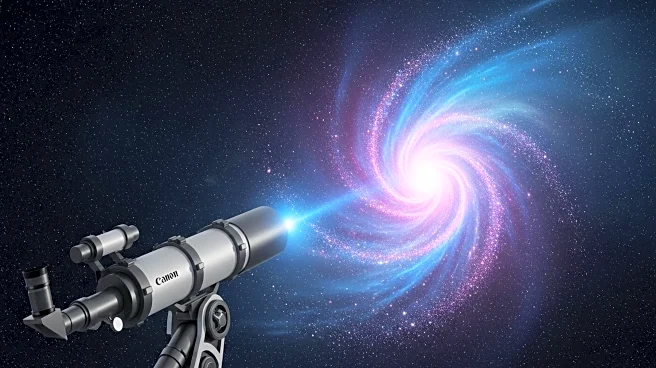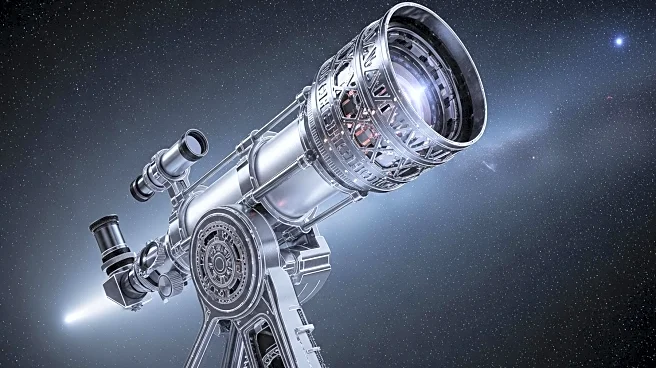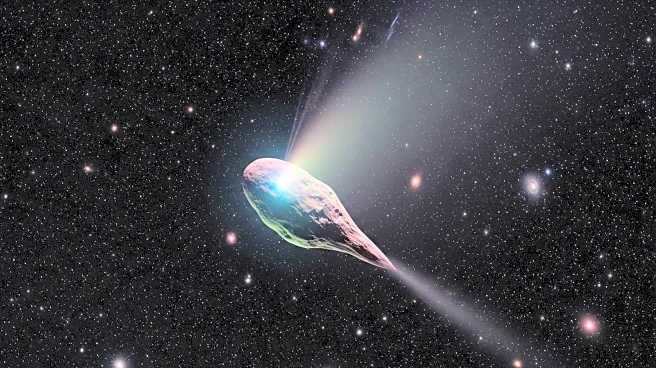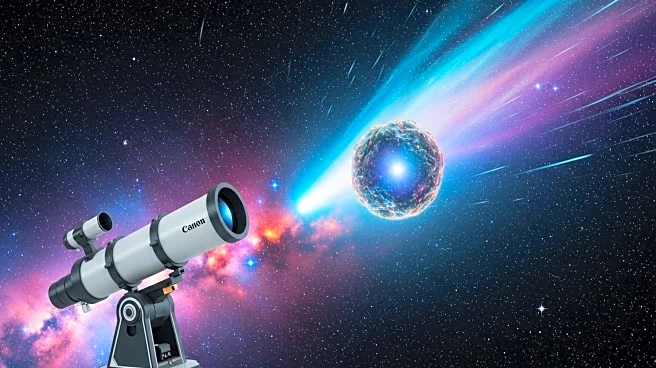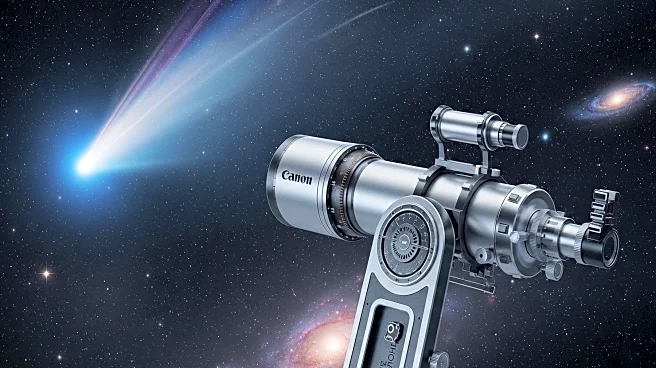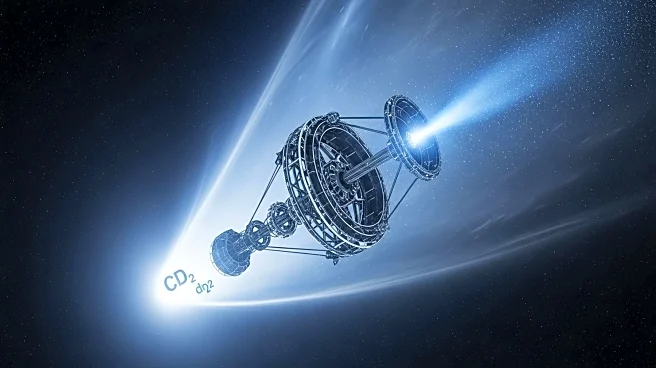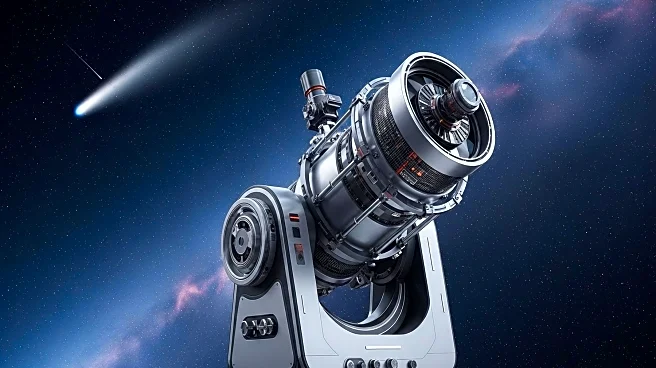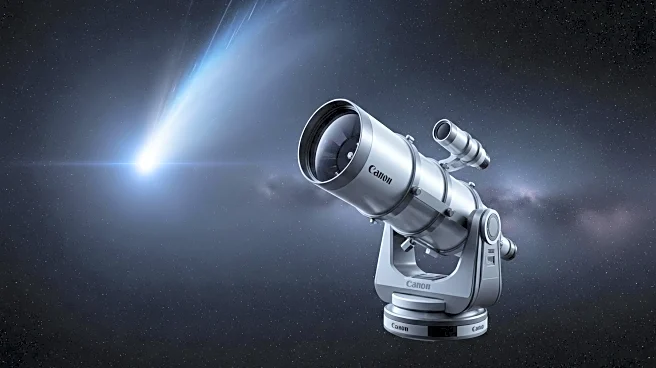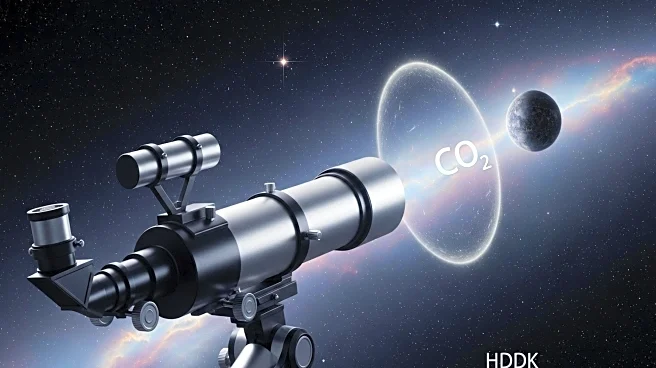What is the story about?
What's Happening?
NASA's James Webb Space Telescope has observed the interstellar comet 3I/ATLAS, revealing a unique composition as it approaches the Sun. The comet's outgassing process has shown a high carbon dioxide-to-water ratio, suggesting it originated in a colder, radiation-rich environment outside our solar system. This composition is distinct from typical comets, which usually have more water vapor. The comet's structure may inhibit water vaporization, making it an intriguing subject for astronomers. The study, published by Cornell University, highlights the comet's potential formation in a protoplanetary disk, where temperatures allowed carbon dioxide to freeze into solid ice.
Why It's Important?
The discovery of comet 3I/ATLAS provides valuable insights into the composition and behavior of interstellar objects. Understanding its unique characteristics can help scientists learn more about the environments in which these comets form and evolve. This knowledge is crucial for expanding our understanding of the universe and the processes that govern celestial bodies. The comet's unusual composition may also offer clues about the conditions in distant star systems, potentially influencing future research in astronomy and astrophysics.
What's Next?
Astronomers will continue to study 3I/ATLAS as it moves closer to the Sun, aiming to gather more data on its composition and behavior. This ongoing research could lead to new discoveries about interstellar comets and their origins. The findings may also prompt further exploration of protoplanetary disks and the conditions that lead to the formation of such unique celestial objects.
Beyond the Headlines
The study of interstellar comet 3I/ATLAS raises questions about the potential for discovering other similar objects in the future. It also highlights the importance of advanced telescopes like the James Webb Space Telescope in capturing detailed observations of distant celestial phenomena. The comet's journey through our solar system offers a rare opportunity to study materials and conditions from beyond our immediate cosmic neighborhood.
AI Generated Content
Do you find this article useful?
